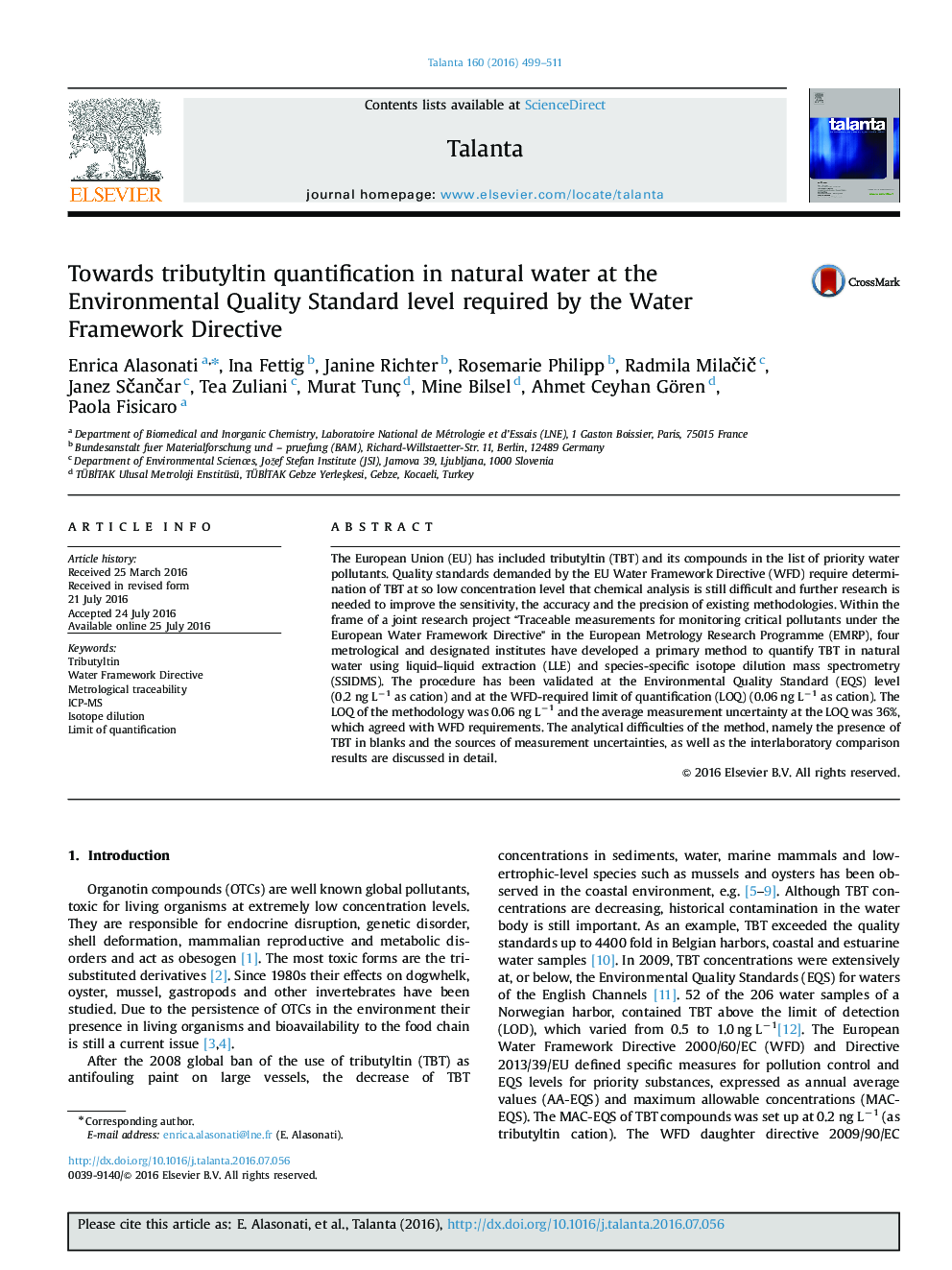| Article ID | Journal | Published Year | Pages | File Type |
|---|---|---|---|---|
| 1243288 | Talanta | 2016 | 13 Pages |
•Development of ID-GC-ICP-MS primary method for TBT quantification in natural water.•Validation at the quantification limit required by the EU Water Framework Directive.•Method validation through an interlaboratory comparison.•Comprehensive discussion on blanks, uncertainties and metrological traceability issues.
The European Union (EU) has included tributyltin (TBT) and its compounds in the list of priority water pollutants. Quality standards demanded by the EU Water Framework Directive (WFD) require determination of TBT at so low concentration level that chemical analysis is still difficult and further research is needed to improve the sensitivity, the accuracy and the precision of existing methodologies. Within the frame of a joint research project “Traceable measurements for monitoring critical pollutants under the European Water Framework Directive” in the European Metrology Research Programme (EMRP), four metrological and designated institutes have developed a primary method to quantify TBT in natural water using liquid–liquid extraction (LLE) and species-specific isotope dilution mass spectrometry (SSIDMS). The procedure has been validated at the Environmental Quality Standard (EQS) level (0.2 ng L−1 as cation) and at the WFD-required limit of quantification (LOQ) (0.06 ng L−1 as cation). The LOQ of the methodology was 0.06 ng L−1 and the average measurement uncertainty at the LOQ was 36%, which agreed with WFD requirements. The analytical difficulties of the method, namely the presence of TBT in blanks and the sources of measurement uncertainties, as well as the interlaboratory comparison results are discussed in detail.
Graphical abstractFigure optionsDownload full-size imageDownload as PowerPoint slide
